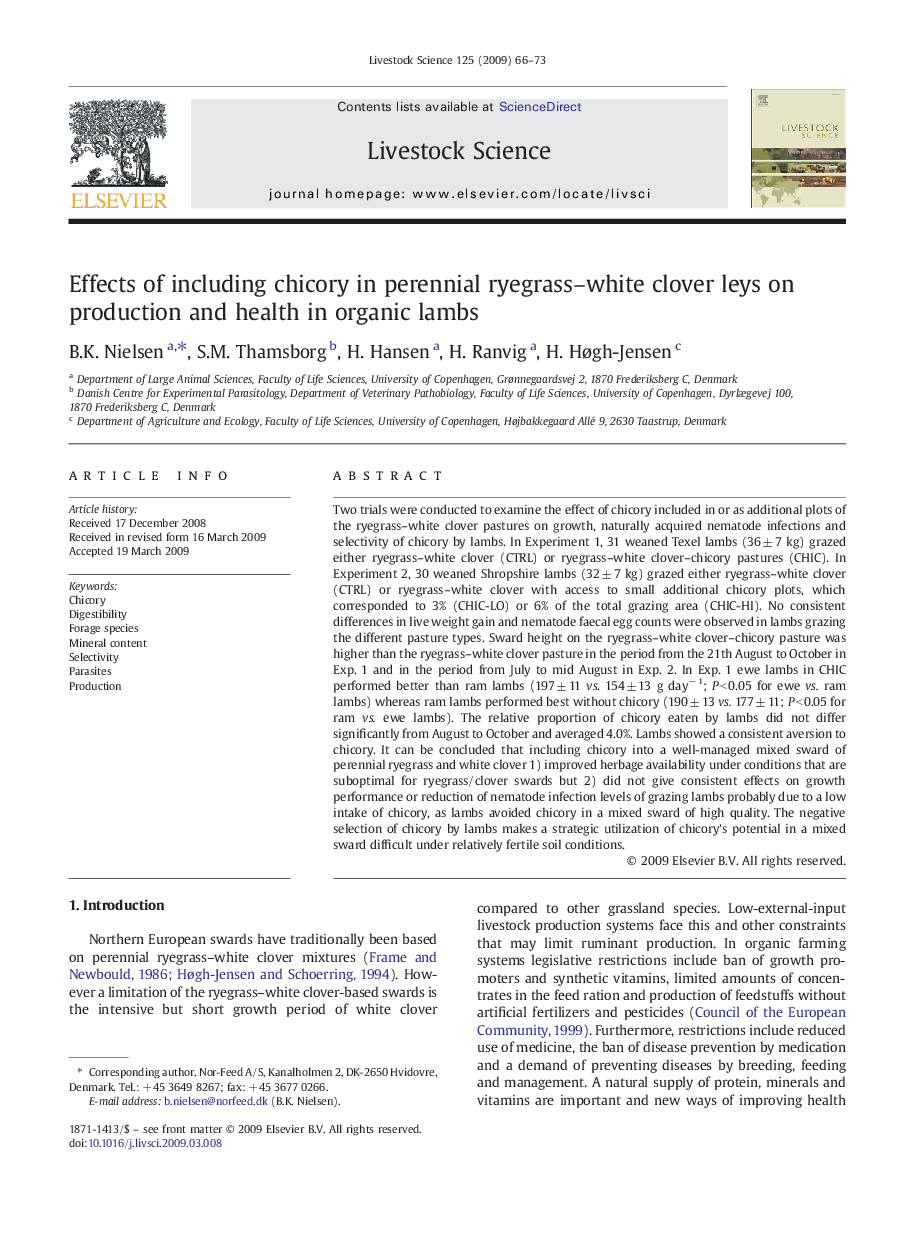| Article ID | Journal | Published Year | Pages | File Type |
|---|---|---|---|---|
| 2448225 | Livestock Science | 2009 | 8 Pages |
Two trials were conducted to examine the effect of chicory included in or as additional plots of the ryegrass–white clover pastures on growth, naturally acquired nematode infections and selectivity of chicory by lambs. In Experiment 1, 31 weaned Texel lambs (36 ± 7 kg) grazed either ryegrass–white clover (CTRL) or ryegrass–white clover–chicory pastures (CHIC). In Experiment 2, 30 weaned Shropshire lambs (32 ± 7 kg) grazed either ryegrass–white clover (CTRL) or ryegrass–white clover with access to small additional chicory plots, which corresponded to 3% (CHIC-LO) or 6% of the total grazing area (CHIC-HI). No consistent differences in live weight gain and nematode faecal egg counts were observed in lambs grazing the different pasture types. Sward height on the ryegrass–white clover–chicory pasture was higher than the ryegrass–white clover pasture in the period from the 21th August to October in Exp. 1 and in the period from July to mid August in Exp. 2. In Exp. 1 ewe lambs in CHIC performed better than ram lambs (197 ± 11 vs. 154 ± 13 g day− 1; P < 0.05 for ewe vs. ram lambs) whereas ram lambs performed best without chicory (190 ± 13 vs. 177 ± 11; P < 0.05 for ram vs. ewe lambs). The relative proportion of chicory eaten by lambs did not differ significantly from August to October and averaged 4.0%. Lambs showed a consistent aversion to chicory. It can be concluded that including chicory into a well-managed mixed sward of perennial ryegrass and white clover 1) improved herbage availability under conditions that are suboptimal for ryegrass/clover swards but 2) did not give consistent effects on growth performance or reduction of nematode infection levels of grazing lambs probably due to a low intake of chicory, as lambs avoided chicory in a mixed sward of high quality. The negative selection of chicory by lambs makes a strategic utilization of chicory's potential in a mixed sward difficult under relatively fertile soil conditions.
